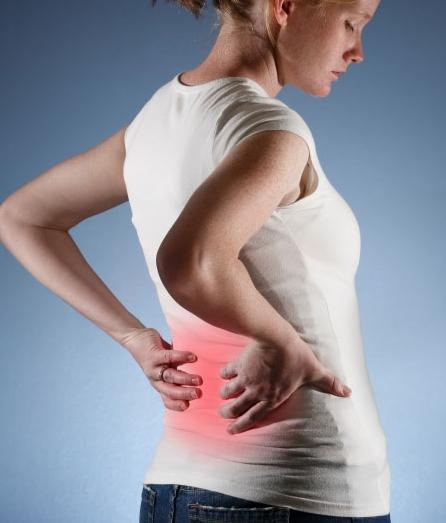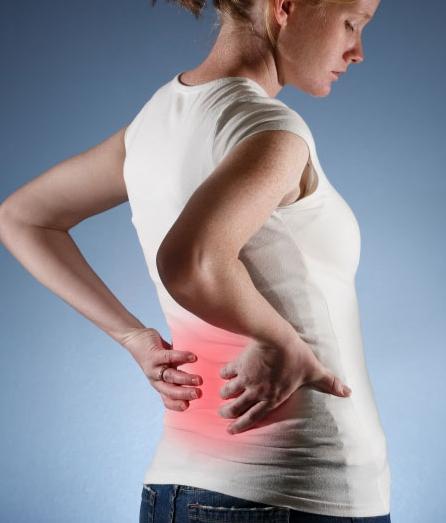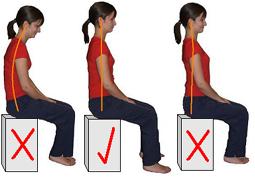 Mild back pain can be a nuisance. It turns everyday tasks into painful challenges. Walking, exercising, working and even sitting in a chair can cause unfathomable levels of discomfort. While seemingly counterintuitive, stretching actually plays a vital role in healing and alleviating back pain. During a period of chronic back pain, exercise is the last thing anyone wants to think about; but spine doctors indicate straightening and extending one’s body to its full length is exactly what the spine needs. It’s common knowledge that regular exercise is an essential component to the body’s overall health, yet many people seem to overlook stretching during their workout routine. But for individuals suffering from chronic back pain, stretching muscles can help alleviate discomfort in the spine, and even help prevent future occurrences of pain.
Mild back pain can be a nuisance. It turns everyday tasks into painful challenges. Walking, exercising, working and even sitting in a chair can cause unfathomable levels of discomfort. While seemingly counterintuitive, stretching actually plays a vital role in healing and alleviating back pain. During a period of chronic back pain, exercise is the last thing anyone wants to think about; but spine doctors indicate straightening and extending one’s body to its full length is exactly what the spine needs. It’s common knowledge that regular exercise is an essential component to the body’s overall health, yet many people seem to overlook stretching during their workout routine. But for individuals suffering from chronic back pain, stretching muscles can help alleviate discomfort in the spine, and even help prevent future occurrences of pain.
Why Stretching Is Essential For a Healthy Body
The human spine consists of many joints, allowing a wide spectrum of movements and contortions. But sometimes these joints tighten when underused and can interfere with the spine’s natural movements. The end result is various levels of back pain. But stretching can help extend one’s muscles and joints while increasing mobility, allowing free range of movement without pain. Not only can stretching soothe back pain, it can also improve flexibility, posture, and circulation throughout the entire body.
Types of Stretches To Reduce Back Pain
Not all types of backstretches will rid muscle strain or injury to surrounding ligaments and discs in the back. In fact, some stretches can further injure the spine by straining or overstretching the muscles. Before beginning any stretching exercises, it’s always best to consult with a spine specialist about which type of exercises are safe from preventing further injury. The most common types of stretching are:
Passive Stretching: This stretch requires the assistance of a partner or equipment. To perform this stretch, simply straighten out the muscle and hold it in place for several moments before returning to the original position. This type of stretching is ideal post-workout at the gym because it helps restore muscle fatigue and prevent soreness.
Static Stretching: This technique involves stretching a muscle to its furthest point, and then holding it in that same position for several seconds. While similar in nature to passive stretching, this type of stretching does not require a partner or device.
Dynamic Stretching: This stretching method uses movement to warm up the muscles, thereby improving flexibility and range of motion for muscles and joints. In addition, dynamic stretching can increase an individual’s cardiovascular and agility performance.
Ballistic Stretching: Similar to dynamic stretching, this type of stretching uses bouncing movements to force the spine beyond its normal range of motion. But individuals should focus on proper technique, as ballistic stretching can increase the risk of further injury when performed incorrectly.
Is It Better To Stretch Pre Workout or Post Workout?
While there is no one-size-fits-all answer, spine specialists advise on stretching throughout the course of the day. Most people tend to stretch before a workout; however, just as many people make the mistake of not stretching after a workout. After a workout, the body’s muscles and joints are warmed up with an increase in blood circulation. Ending a workout with backstretches helps reach resting heart rate and relieve the body with a cool down.
Exercisers don’t have to limit stretching to before and after workouts; in fact, they can stretch at any time during the day. Whether it’s first thing in the morning or right before bed, making stretching a part of a daily routine lessens a person’s chances of developing back pain.
Helpful Tips For Stretching
Exercise should help, not harm, the body. So maintaining the proper technique will reduce the chance of further injury. When performed incorrectly, these stretches can do more harm than good. Before lying down on a mat or against a wall, be mindful of these helpful tips:
- Avoid extreme hyperextension around the spine
- If stretching feels painful, stop immediately
- Never force movement
- Do not perform twisting or circular motions
Those suffering from back pain can seek a variety of treatment options, but the right choice depends on the underlying cause of pain, as well as the physical demands of everyday life. For many people, back pain can subside quickly with little or no medical intervention in a matter of a few weeks, which is ideal for people wanting to avoid spinal surgery. However, medical intervention should take place while deliberating the best treatment option.
Conclusions
An exercise program, whether at a physical therapy practice or a gym, should help stretch, strengthen and heal the core muscles in the back. Through a regimented program— developed by a trusted spinal expert— patients will help build strong, flexible muscles less prone to injury. For those suffering from various levels of back pain and discomfort, proper stretching will help patients return to normal activities as soon as possible. To learn more options to alleviate mild to chronic back pain, contact an expert spine surgeon in the nearby area today!




